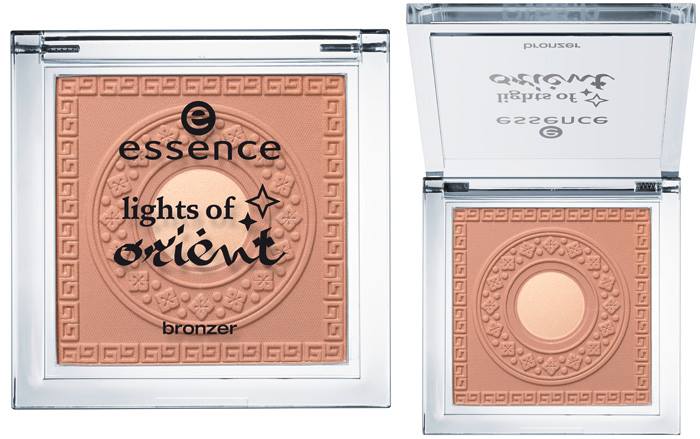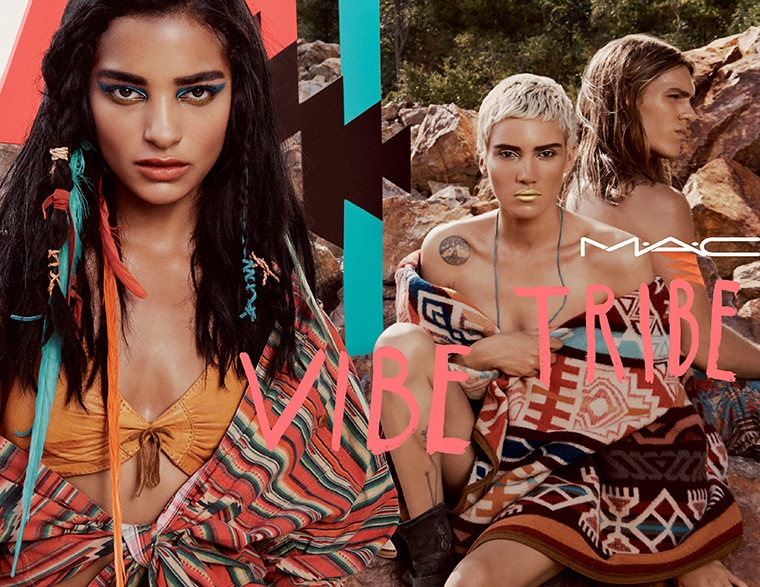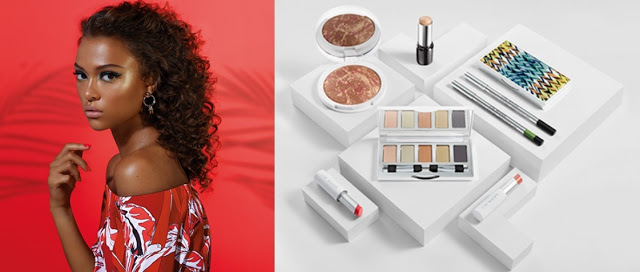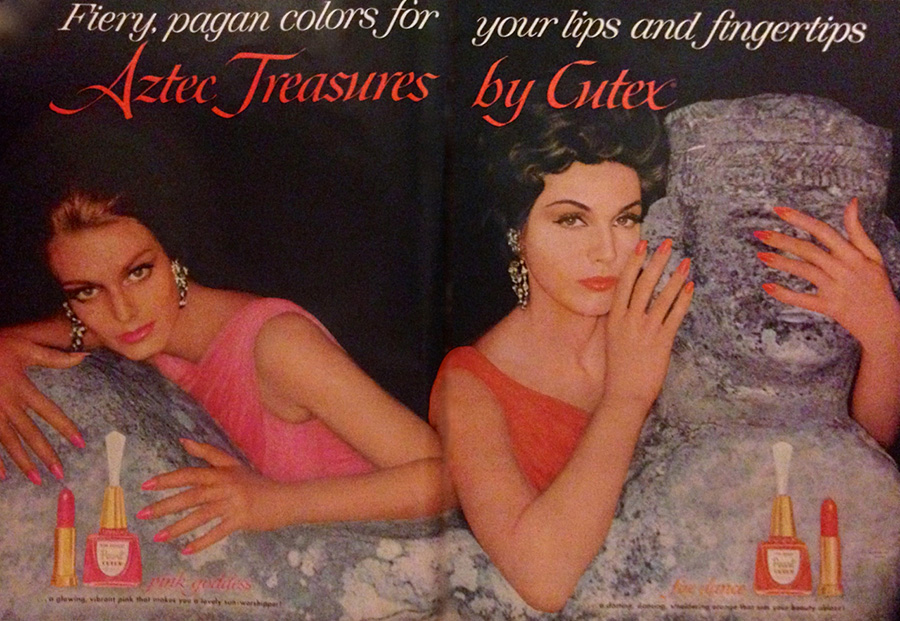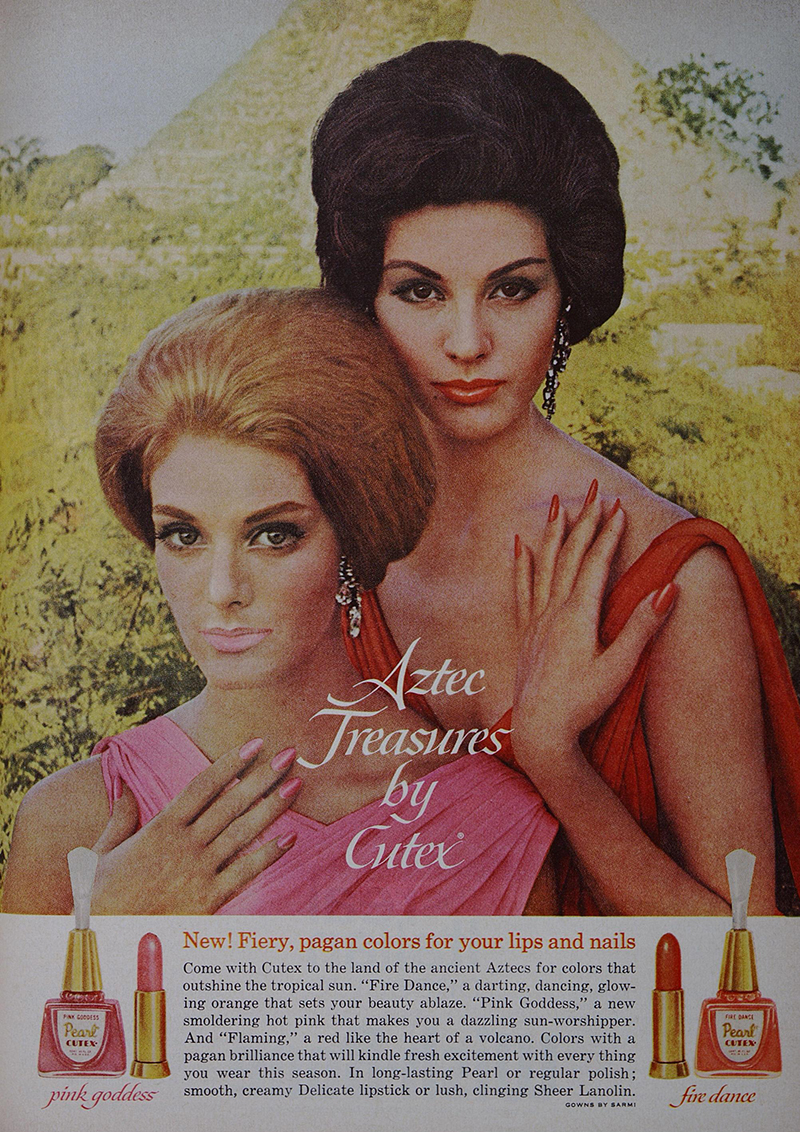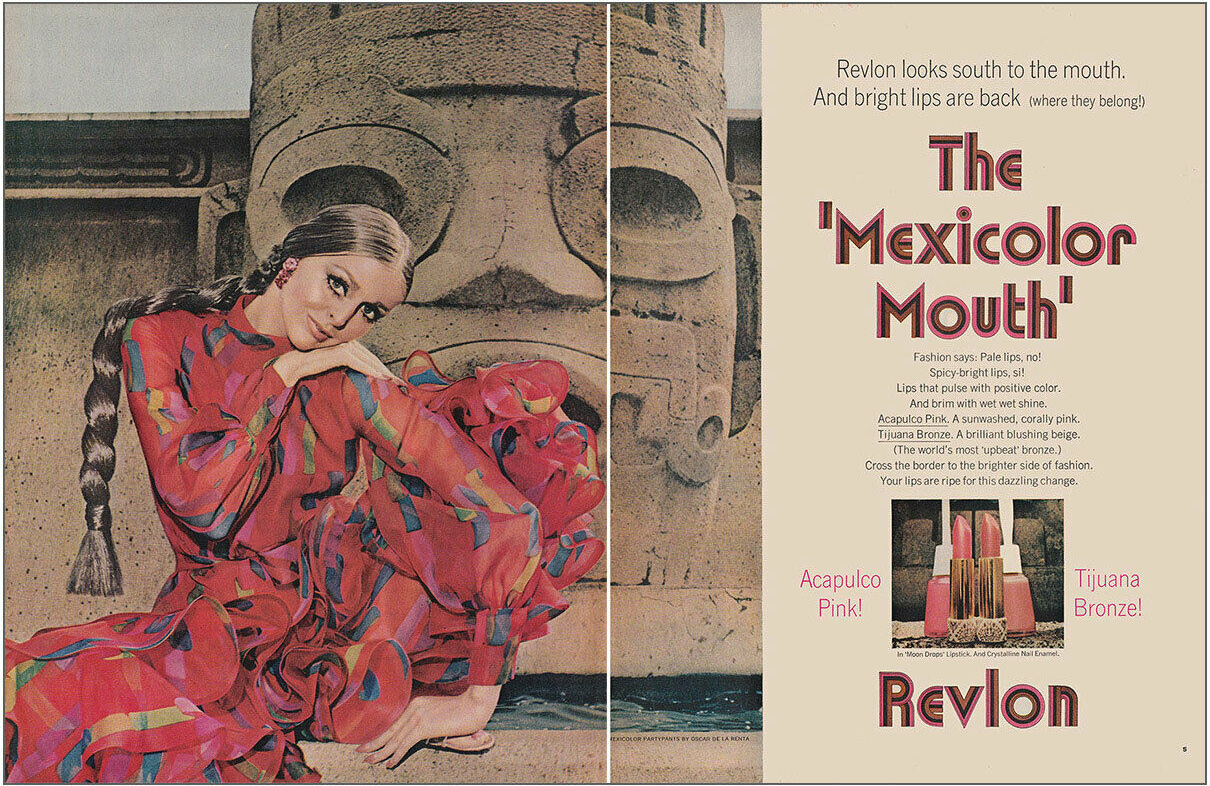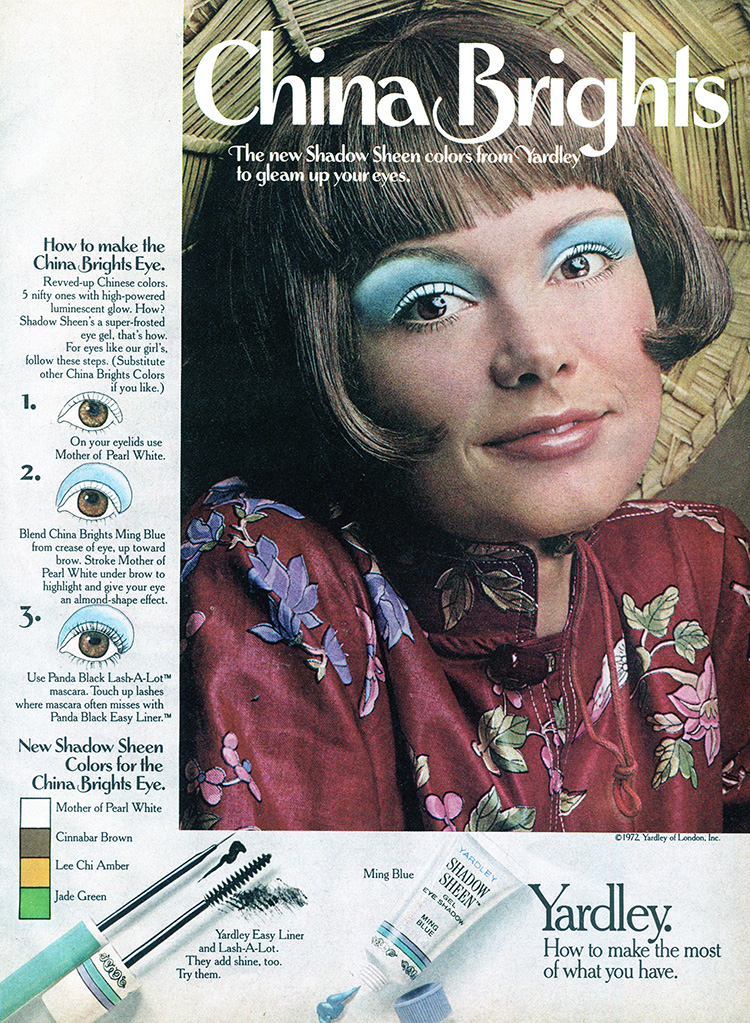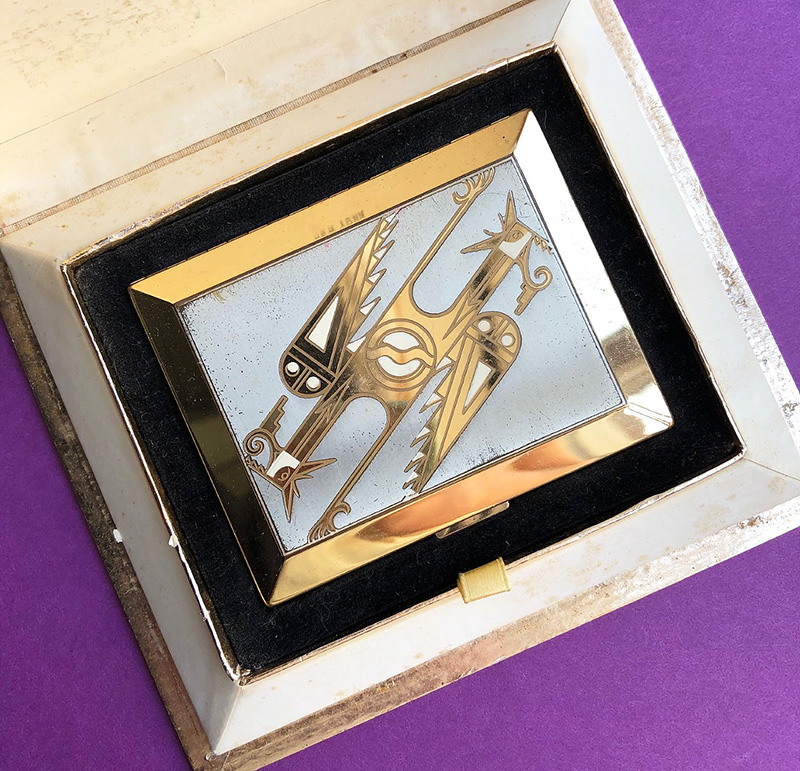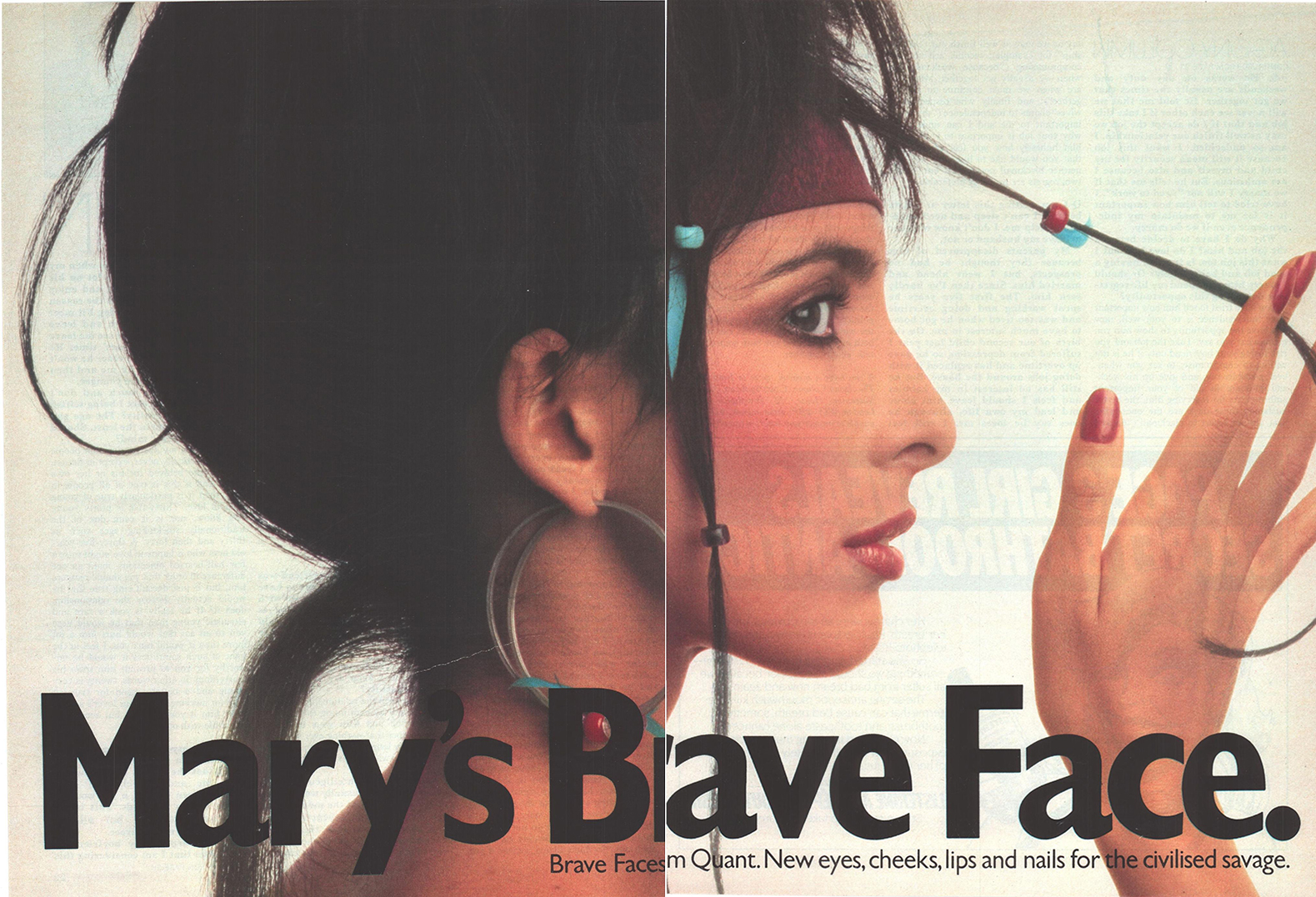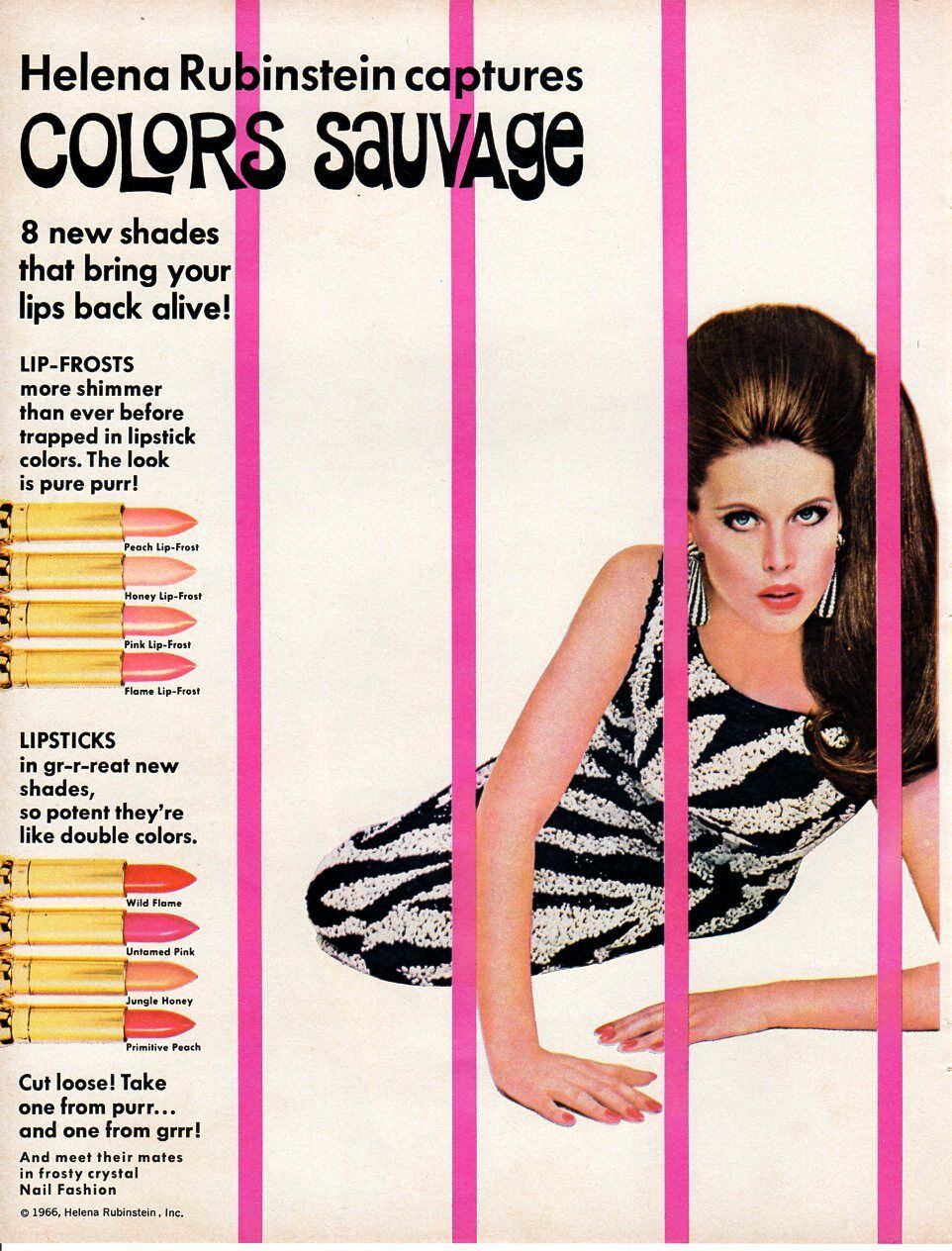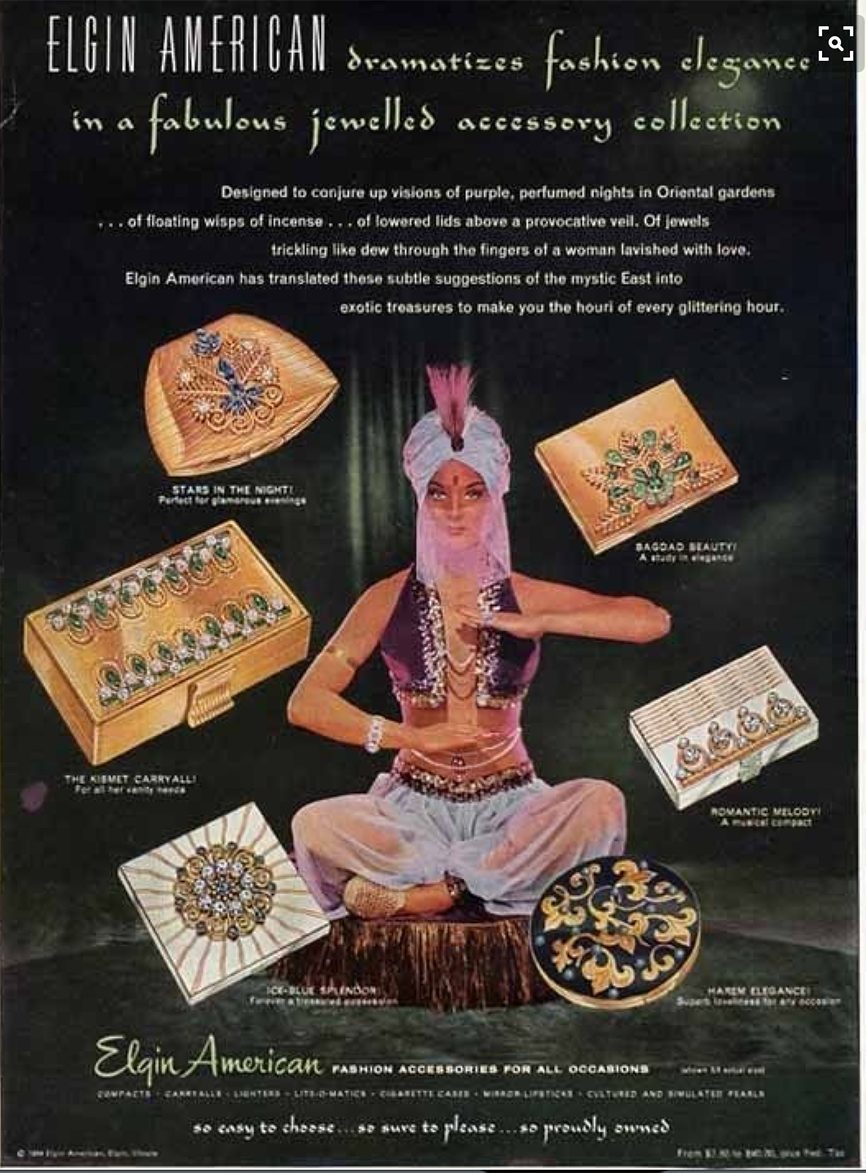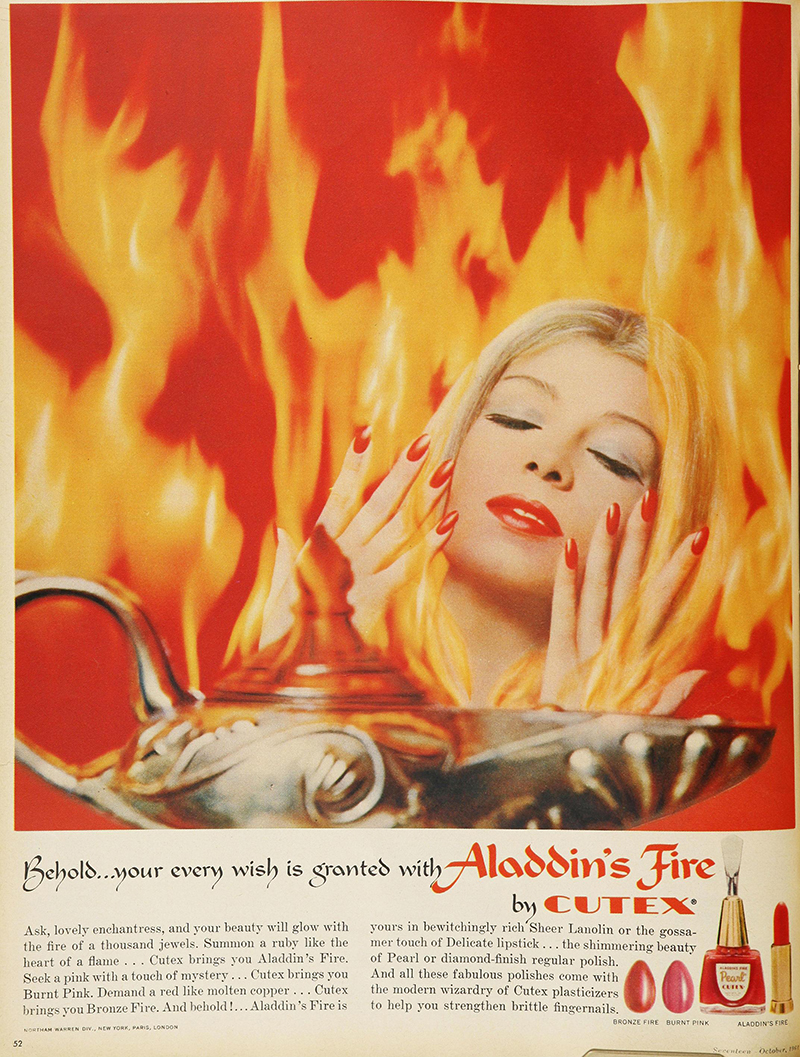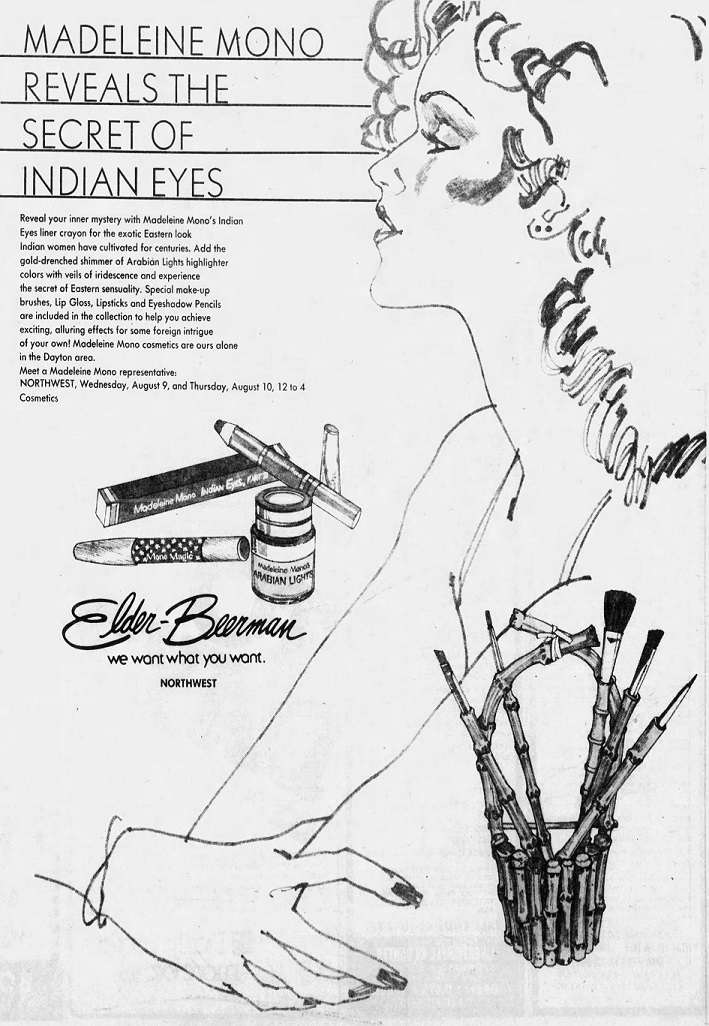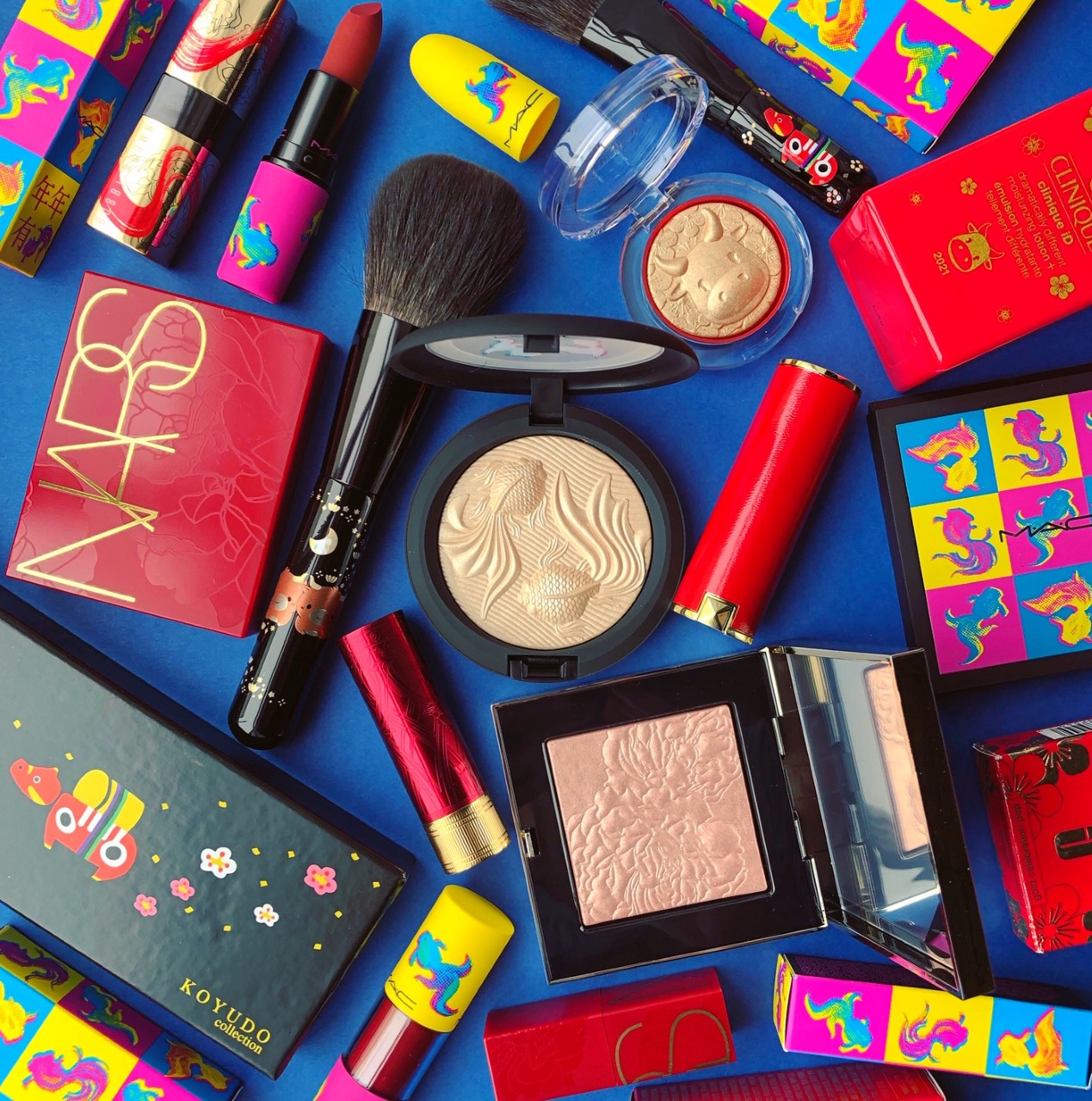CW/TW: racist imagery and slurs for Indigenous, Asian, Latinx, and Black populations as well as those of Middle Eastern descent.
It's been nearly a decade since I discussed one of the many ugly parts of the beauty industry: cultural appropriation in makeup advertising and collections. The purpose of this post is to see what's happened on that front since 2013, highlight yet more historic examples and examine where we are now and where we're going. Is the industry moving in a positive direction with respect to cultural appropriation? How about the broader makeup wearing community and artists? The usual caveat applies, which is that cultural appropriation in makeup could be an entire book, but I think at least scratching the surface might be helpful in terms of reminding people about this issue and informing future research.
As covered in the previous post on this topic, cultural appropriation within a fashion and beauty context is defined as companies taking a culturally important symbol or idea (usually of a non-dominant or marginalized group) and using it for profit rather than true cultural appreciation. (This primer is still really good). Cultural appropriation is marked by a failure to acknowledge the significance behind a cultural artifact/practice or the reduction of a group to a harmful stereotype. Something that I didn't clarify in 2013 is that cultural appropriation is not different than racism but rather a form of it, along with stereotyping, fetishization and othering of BIPOC cultures. I mistakenly stated that appropriation "ties into racism", but that's not accurate. It IS racism, full stop.
So what are some of the culturally appropriative ads and collections that have been released in the past decade or so? Summer 2016 brought both Essence's Lights of the Orient and MAC's Vibe Tribe collection. In Essence's case, the design appears to be a mishmash of a watered-down Middle Eastern-looking pattern and a Greek key border for some reason. The packaging for Vibe Tribe, meanwhile, looks vaguely Navajo but does not reference any particular Native American tribe.
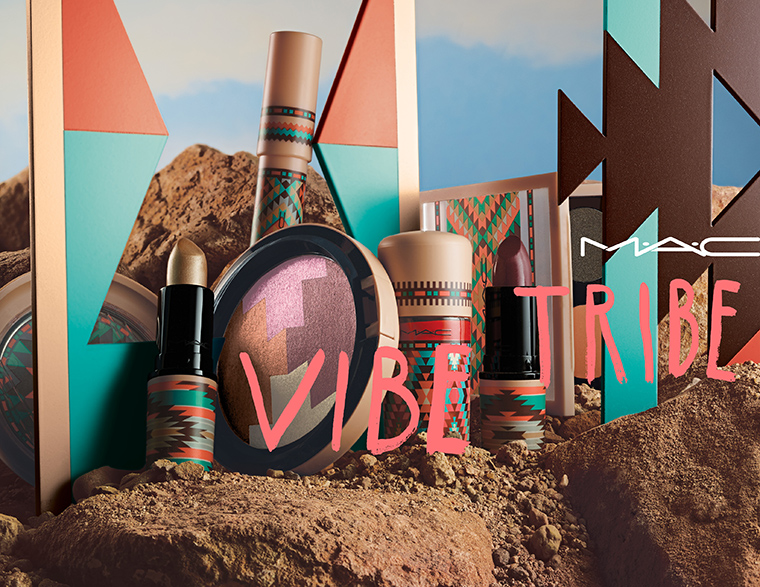
(images from beautycosmetic.biz and refinery29.com)
With the 2017 Lise Watier Luxotikka and Givenchy's 2018 Africa Light highlighter, it's not clear which culture they're ripping off. Once again, Africa is not a monolith. Some "tribal" print and a Black (?) model do not automatically refer to Africa. What is clear is Watier's portmanteau of "lux" and "exotic", and the latter word should not be used in this context.
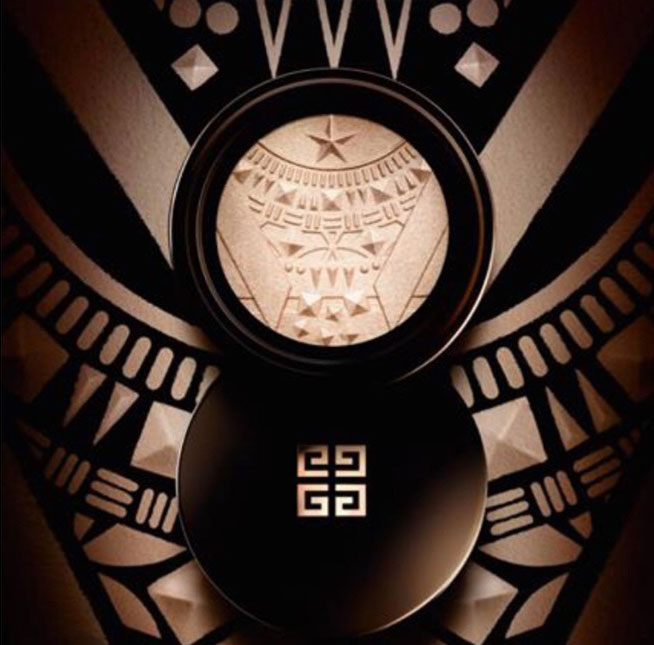 (images from beautycrazed.ca and beautyalmanac.com)
(images from beautycrazed.ca and beautyalmanac.com)
Colourpop's 2020 Sandstone palette was more or less a Vibe Tribe redux.
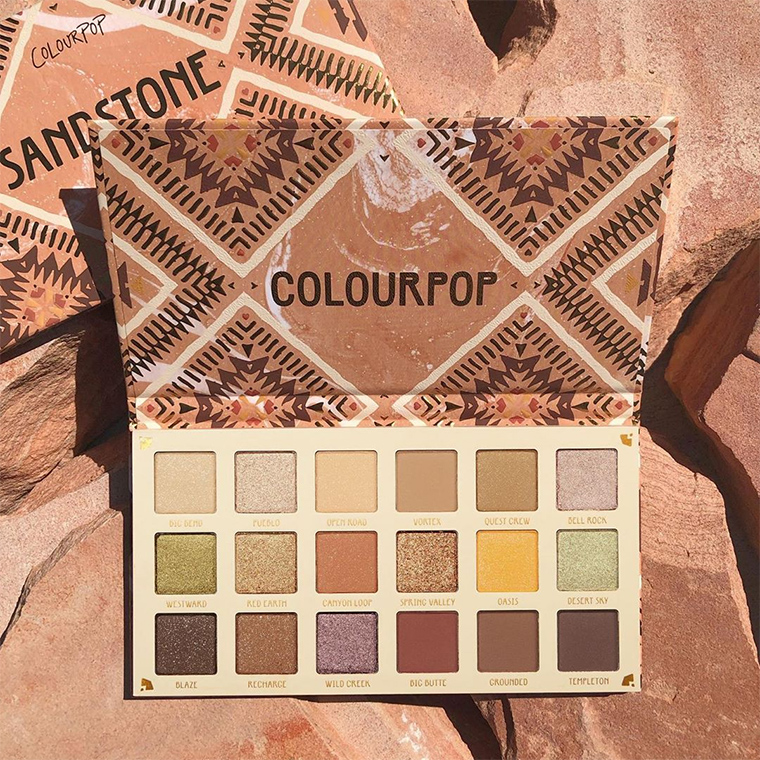 (image from temptalia.com)
(image from temptalia.com)
Nomad's Shanghai palette was more complicated. As the company name suggests, Nomad is dedicated to creating palettes and collections named for the two (white, European) founders' globe-trotting adventures. Some argued that their products are meant to represent their experiences in the places they've visited rather than capturing the spirit of a particular locale. And travel-themed collections and lines are generally innocuous. But unlike Nomad's other releases, most agreed that the Shanghai palette seemed completely ignorant of the city (despite Nomad's claim that they worked with Chinese colleagues living there) and reduced it, along with much of Chinese culture, to stereotypes. People also felt it was tone-deaf given the rise of violent attacks against members of the AAPI community in 2021, which Nomad did not acknowledge at all.
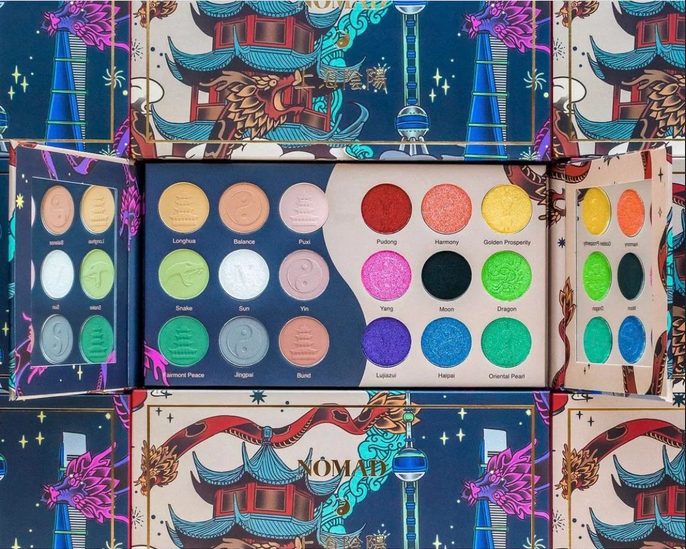
(image from reddit.com)
And now for some vintage pieces I've come across. Cutex's Aztec Treasures refers to "pagan" colors, which in this instance is synonymous with some other racist terms ads love to use when describing ancient, non-white cultures: savage or primitive. The sculptures and architecture are reduced to props for white ladies. Using art to sell makeup is not new, nor is it problematic for a brand to be inspired by white/European artists since they are referring to a dominant culture, but in this context and combined with the ad copy, it is most definitely appropriation.
Revlon's 1969 Mexicolor collection ad isn't the most offensive, but inventing words like "Mexicolor" and the model's styling contribute to stereotyping. And once again the art serves as a backdrop.
I don't even know where to start with Yardley's China Brights ad from 1972. The shade names, the styling and the entire concept are just…awful.
The assault on Native American cultures ranges from garden-variety offensive to OMG-how-did-they-get-away-with-this-even-back-then. Embarrassingly, I purchased this Richard Hudnut compact a while ago. I knew it was named Thunderbirds, but because it was released in 1941 I believed it was referencing the U.S. air force group, which, in turn, I thought was named from the fact that planes were sometimes called birds and military jets make a ton of noise – I literally thought thunderbirds referred to WWII planes and the compact's imagery was an interesting representation of the name. I usually don't find military themes appealing and tend not to buy them for the Museum, but I honestly enjoyed this particular design. Little did I know that thunderbirds are mythological creatures from the folklore of many different Native American tribes. (According to this museum, the air force group's adoption of the thunderbirds name and symbol in 1939 was a result of their previous insignia – a swastika – being synonymous with Nazis by that point.) In any case, I don't think this compact had anything to do with the U.S. Air Force, but even if it did, it would still be appropriation.
It's bad enough that Tussy refers to the "Pow Wow" face, but to equate Native American speech with that of a Neanderthal is truly abhorrent. The ad copy reads like a cave man cliché.
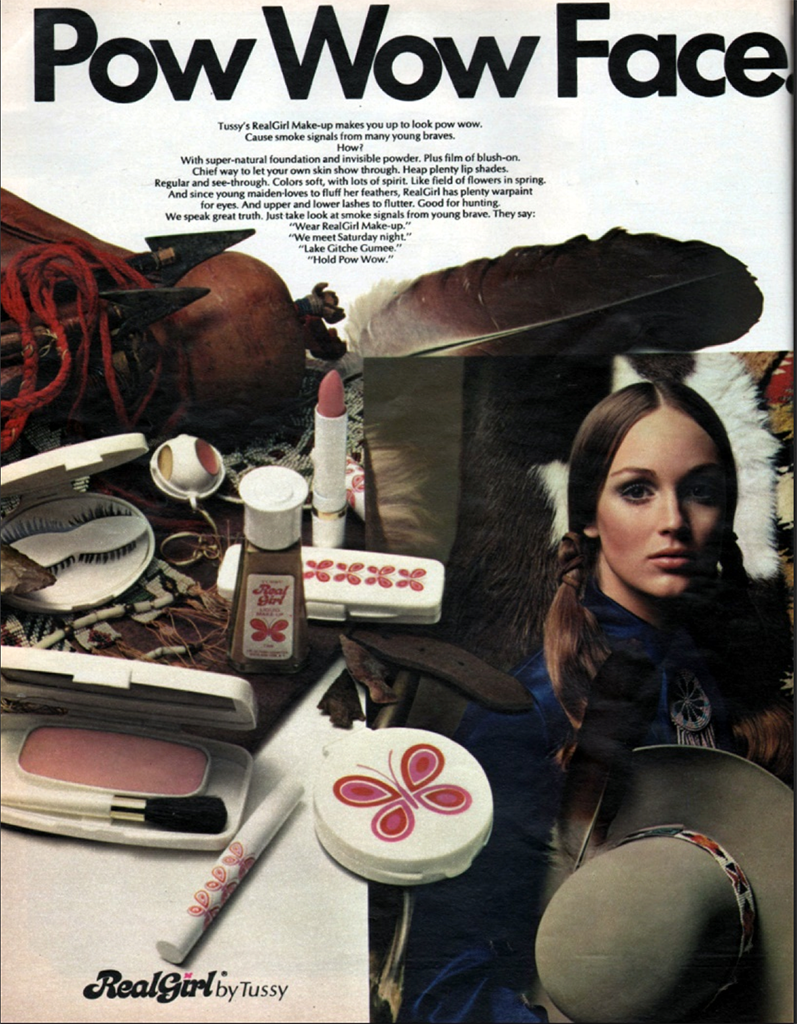
(image from reddit.com)
The copy for Revlon's Sun Canyon Colors collection, meanwhile, erases the fact that land was outright stolen from Native Americans, instead opting for the narrative that the West was a "new frontier" to be "discovered". And let's not ignore the fact that the white model is appropriating Native garb as a costume.
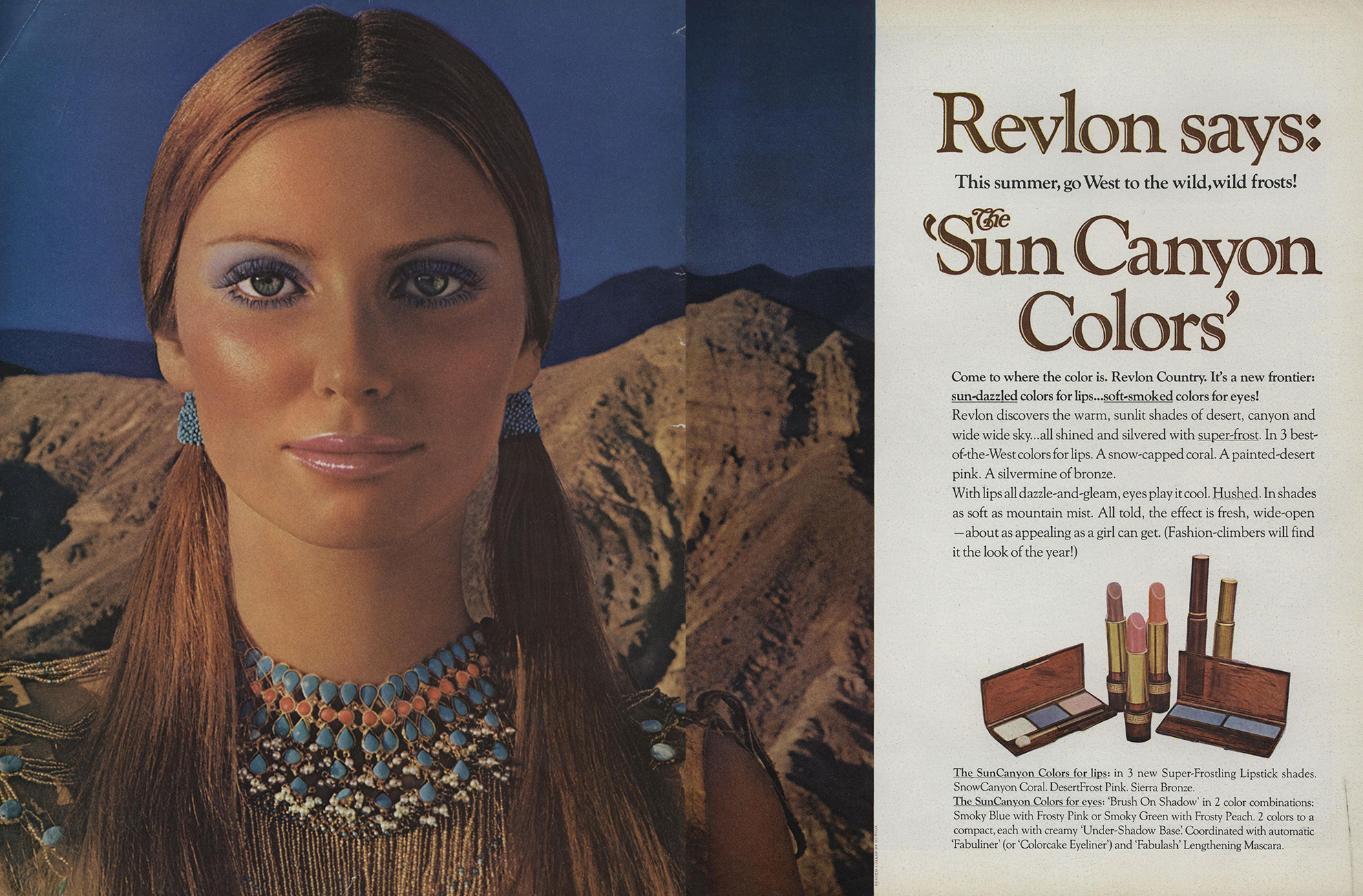
(image from archive.vogue.com)
Mary Quant's 1981 Brave Face collection makes "savage" Native American culture palatable and "civilized".
Indeed, the colonialist overtones are strong in several ads.
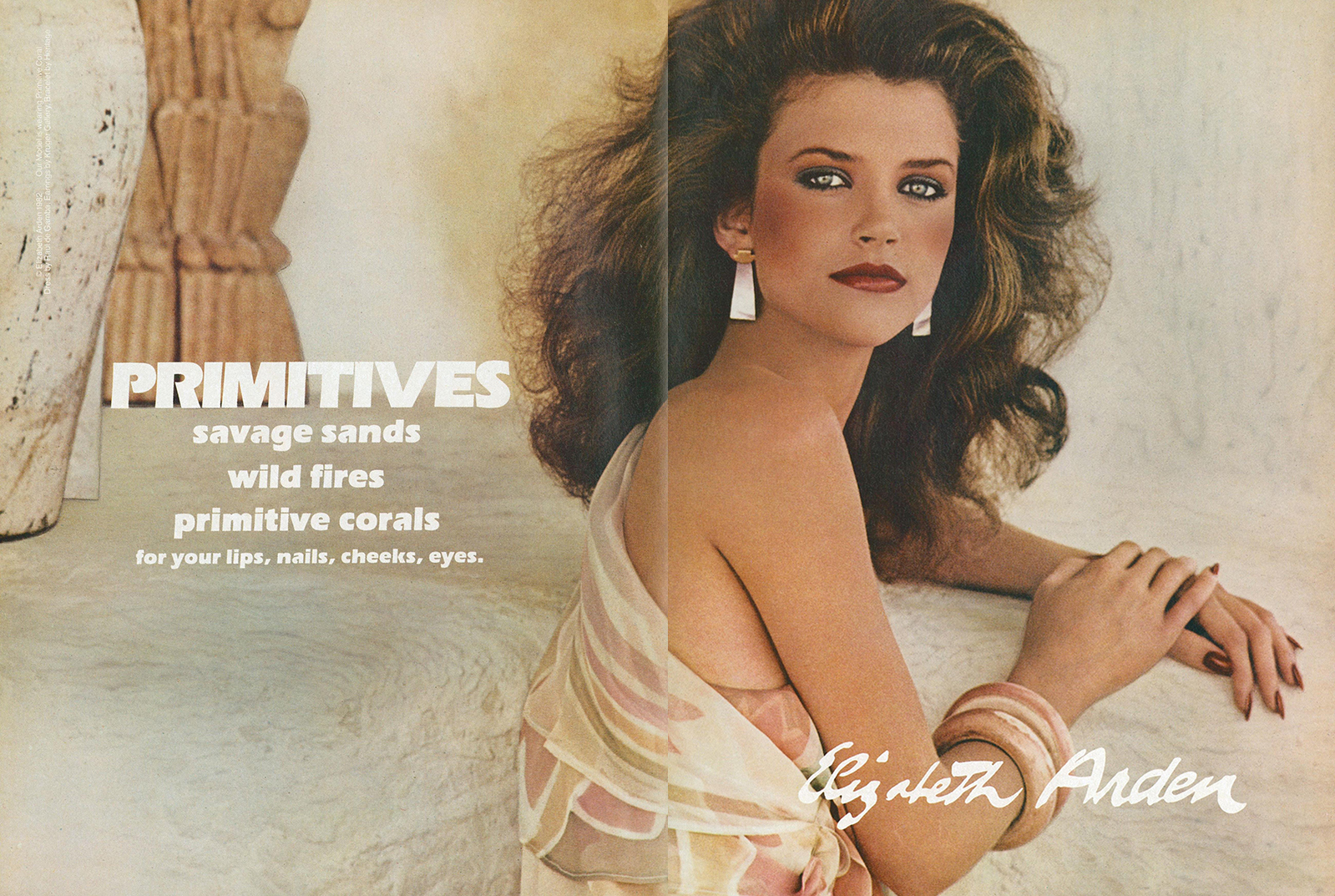
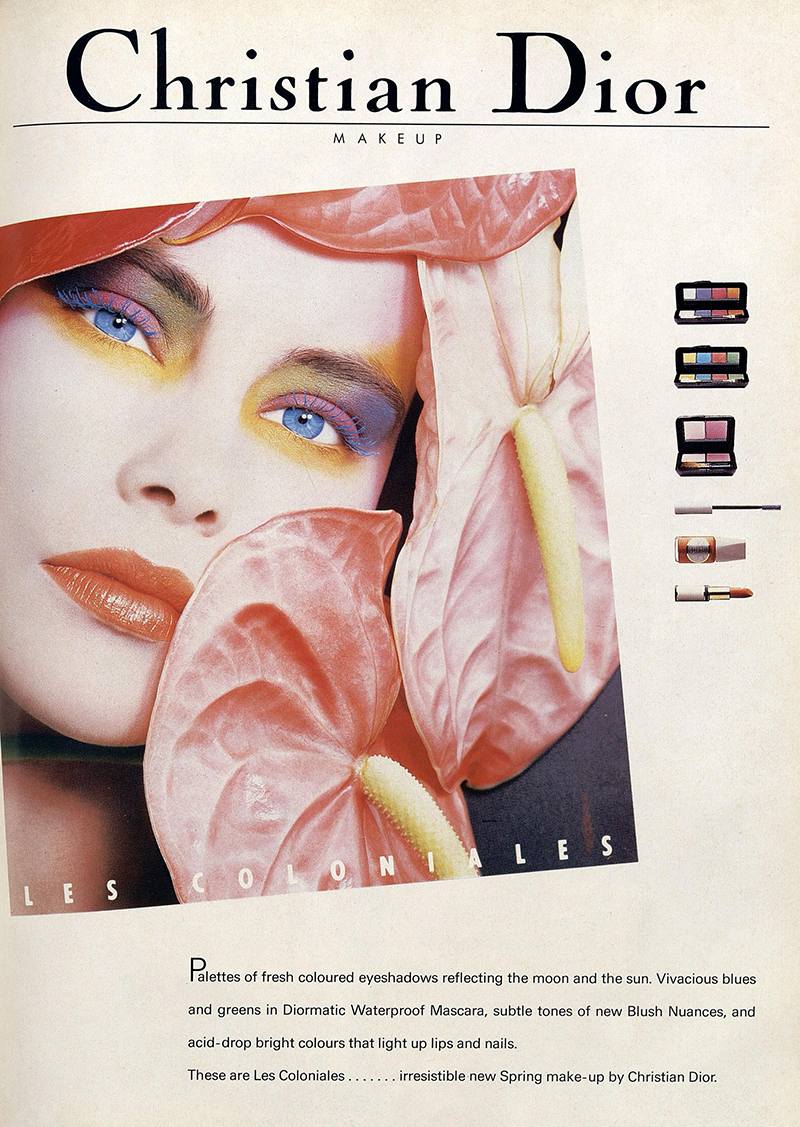
(images from archive.vogue.com)
As in the Shem el Nessim line, Middle Eastern cultures were also ransacked and stereotyped. The fonts in these ads are particularly bad.
"Harem Elegance" and "Bagdad Beauty"?!
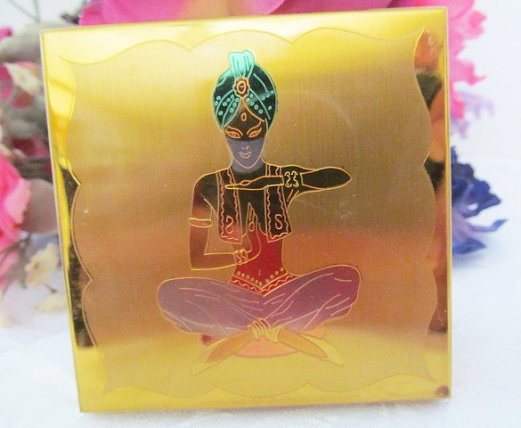
(image from etsy.com)
Cutex seemed to be on a cultural appropriation streak in 1961.
Well-to-do, London-born Madeleine Mono made her entire cosmetics career off of a product she introduced in 1974 named Indian Eyes, a kajal pencil liner. Mono copied a genuine Indian formula she had purchased in an Indian-owned store in London, put it into pencil form, added a sizeable price markup and shopped it around to department stores. By 1981 the company had sold over 500,000 Indian Eyes pencils and was worth $8 million. I guess Mono couldn't get quite as rich if she had imported original ingredients from India or worked with an Indian business partner, so she opted for appropriation. Like white-owned brands that sell traditional Asian skincare tools, Mono really didn't have any business profiting off of Indian cosmetic practices in this manner. While there is a vast array of kajal pencils from non-Indian owned brands on the market these days, Mono's exotification of India made the product problematic, and while it's not her fault she was born in England, the whole operation smacks of British imperialism. (As a side note, I'd love a full history of how kohl and kajal pencils became normalized in the Western makeup world…but that's a project for another time.) The company also managed to branch into stereotyping Middle Eastern heritage with their Arabian Lights highlighters – shade names included Genie Gold and Bagdad Blue – and further mined Asian culture by releasing brushes with bamboo-shaped handles.
Around the same time, Mary Quant's Desert Chic collection similarly appropriated cultures from Middle Eastern countries.
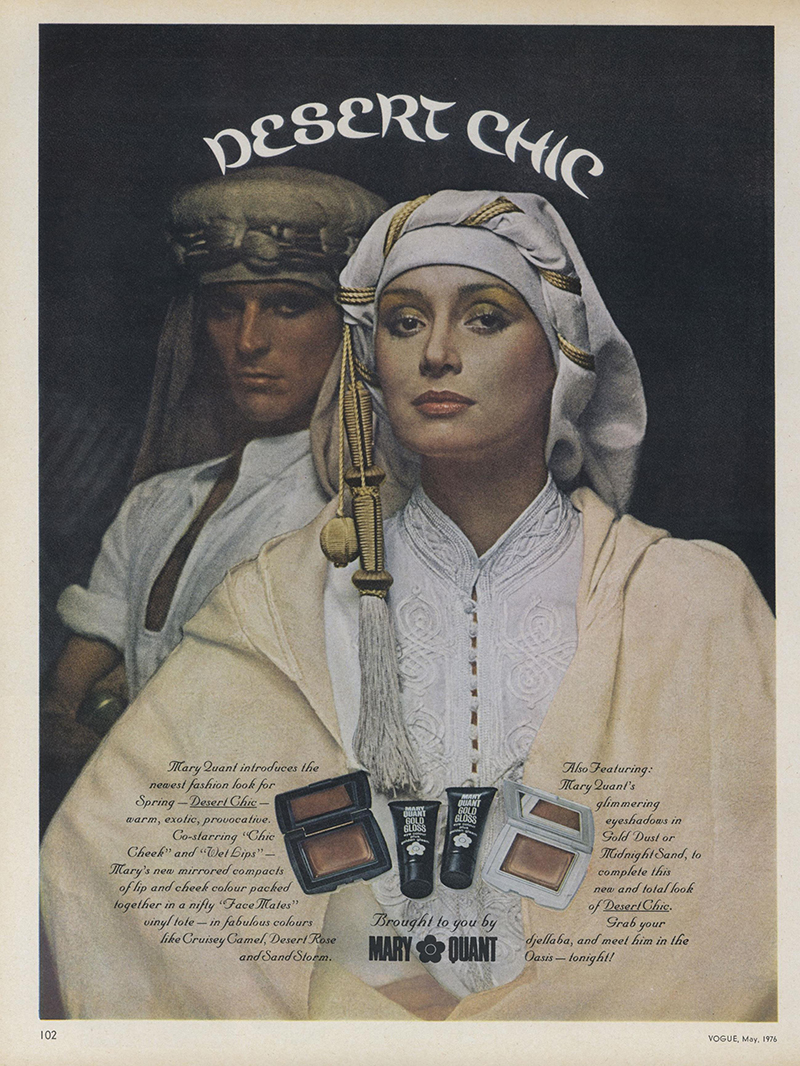
(image from archive.vogue.com)
I'll be discussing appropriation of ancient Egypt in the Museum's fall exhibition later this year.
I don't want to get too off-track – the focus of this post is cultural appropriation – but I did want to mention that along the spectrum are the more overtly racist objects/trends/incidents or those that are offensive for different reasons, including but not limited to (again, literally too many to list and describe in detail): the fox eye trend, blackfishing, a blush named after Anne Frank, ads that dehumanize Black men, an influencer casually using an Asian slur during an eyeliner tutorial, an incredibly tone-deaf and insensitive email from Ulta, and an eyeshadow palette with shades named after various diseases. This is to say nothing of offensive shade names more generally. And of course there's a slew of vintage products such as Halloween and stage makeup kits, Blackamoor compacts, the late '50s craze for the "O——-l eye" (led by Elizabeth Arden* and perhaps a precursor to the fox eye trend), Revlon's 1981 G—y Gold collection and the entire Chen Yu line (which, incidentally, was produced by James Leslie Younghusband, the jerk behind the equally fetishizing Tattoo brand.)
So why do makeup companies engage in cultural appropriation? Obviously they're out to make money, but why was/is plundering various cultures such a common tactic, especially when there are other options available such as working with an artist or consultant who hails from that particular culture? I can think of a few reasons. One is the over-saturation of the cosmetics market. As noted in the Museum's post on Tattoo, so many brands and collections, companies seem to think that anything marketed as "exotic" will stand out from other products and catch the customer's eye. Second, the industry still misses the mark in terms of racial and cultural diversity in the U.S. The people responsible for creating and marketing collections aren't necessarily sensitive to cultural appropriation because the majority of them have never had to deal with it.
Another question is what to do with culturally appropriative objects and trends. Should they be purchased/participated in? On the one hand, it pains me to spend money on anything that's overtly bad and I certainly would not knowingly engage in an derogatory trend. On the other hand, basically all makeup is problematic on some level; it's a matter of which brands and influencers get exposed for their wrongdoings and the relative level of offensiveness. From a museum standpoint, I think it's necessary to discuss and display everything. If a museum is going to cover makeup from all eras and cultures, it has a responsibility to call attention to the bad along with the good. However, there's a line between educating museum visitors and traumatizing them. So more importantly than purchasing, how does a museum go about displaying and talking about the really awful stuff and acknowledging that the whole industry was built on racism and discrimination, worker exploitation, harmful ingredients, animal testing and the negative impact beauty packaging has on the planet, while also highlighting the things that aren't quite as egregious? I don't have an answer yet, but I hope to sort it out in the next MM Musings, which will discuss museums as agents of social change.
Anyway, it may be naivete on my part, but I believe makeup is moving in a positive direction with respect to cultural appropriation. The general public seems more aware of appropriation and in some cases, this leads to companies actually working to remove appropriative products from shelves and ads. Colourpop's Sandstone collection was repackaged after people spoke out about its questionable design, and in 2019 Fenty's Geisha Chic blush was pulled immediately from distribution and renamed. Nomad also shut down production of its Shanghai palette within days of revealing images of it and the ensuing backlash on social media. Arguably companies felt pulling a product hurt their bottom line less than a controversy, so they most likely removed or repackaged products to protect their reputation, not because they genuinely learned why they were wrong or felt any remorse. Still, makeup enthusiasts who are not industry professionals are now debating whether it's permissible to wear ancient Eyptian-inspired makeup as well as looks from a variety of cultures. Along those lines, over the past few years there's been more dialogue among consumers regarding collections and looks inspired by Lunar New Year and Day of the Dead celebrations. Slapping red packaging on a random product and marketing it for Lunar New Year, especially by a non-Asian brand that does not acknowledge the holiday's traditions or the larger Asian community, is a mindless cash grab. Some argue that the commodification of Lunar New Year can help raise awareness of Asian heritage, while some feel that any products sold specifically for the holiday are appropriation. (For the record, I'm still not sure of where I stand on this…I used to think the majority of LNY items were more cultural appreciation, but now I'm not sure. I know that in 2022 I purchased much less LNY makeup than in previous years because a lot of it was so uninspired and there were more non-Asian brands who don't even have a sizeable market in Asia releasing it, which didn't sit well with me.)
Cultural appropriation is still happening, of course, but anecdotal evidence suggests it does seem that people are more educated and speaking up. While it's going to be many more years before we don't see any instances of cultural appropriation or other more overtly racist collections and ads, it appears there's been infinitesimal improvement as compared to 2013. When I wrote part 1 of this post there were few major publications calling out cultural appropriation in the beauty sphere. Most of the links included in that article were from beauty bloggers who, like the Museum, had a relatively small following. But as of this writing, a quick Google search for "cultural appropriation cosmetics" shows at least 5 pages of articles by trade publications and mainstream media, including WWD, Brydie, Beauty Independent, and Teen Vogue. What needs to happen, as I've noted previously, is structural change. Until there is true diversity and inclusion at the upper echelons across the entire industry and major media outlets, there will still be cultural appropriation. One last point is that there's been significant growth of brands whose cultures have been ripped off. I don't think new makeup companies or products are a solution to cultural appropriation – the planet is drowning in beauty waste – but newcomers such as Prados and Florasis are helping raise awareness of their respective cultures while also reclaiming them from an industry that historically mistreated or ignored them. And I do think they contribute to structural change in the business in that they help offset the endless onslaught of white-centered brands, particularly those by celebrities. If there are new brands entering the scene, they should be culturally diverse.
Thoughts?
*Interestingly, a 1955 press photo for Arden's Eye Kohl was used on the cover of Kathy Peiss's Hope in a Jar.


